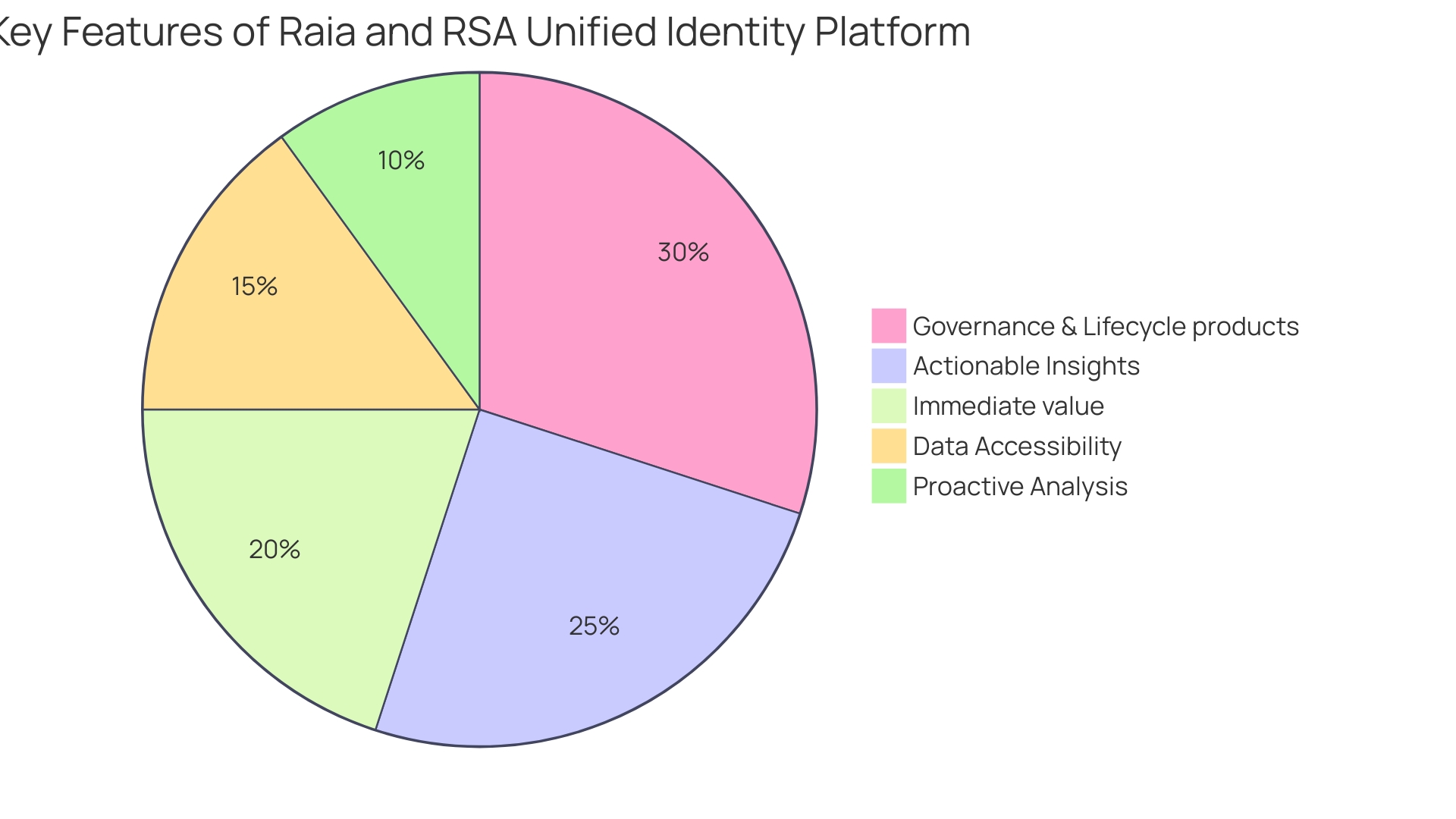Introduction
Robotic Process Automation (RPA) has revolutionized business operations, offering organizations the ability to streamline processes and enhance productivity. In this article, we will explore four top-tier RPA solutions: UiPath, Pega RPA, Nice RPA, and Kofax Kapow. Each solution brings its own unique set of features and benefits to the table, empowering businesses to automate tasks, optimize workflows, and drive efficiency.
From UiPath’s user-friendly design and advanced functionality to Pega RPA’s integration of machine learning and real-time analytics, these solutions offer practical solutions to the Director of Operations Efficiency’s challenges. Whether it’s streamlining data extraction with Kofax Kapow or leveraging the low-code automation platform of Appian, these RPA solutions are shaping the future of work, where technology not only performs tasks but also understands and adapts to the complexities of business needs.
UiPath
UiPath stands out as a top-tier player in the RPA landscape, not merely for its user-friendly design but also for the depth of its functionality. It’s not just the drag-and-drop simplicity that makes it a popular choice; its ability to automate complex workflows with precision and integrate effortlessly with a myriad of systems adds to its reputation. UiPath surpasses basic mechanization with a collection of tools for process discovery, analytics, and real-time monitoring, equipping enterprises with the resources to refine their operations. Indeed, UiPath’s role in transforming service delivery is underscored by the experiences of companies like Hiscox, where RPA facilitated a 28% reduction in repetitive workload and enhanced response times, directly impacting customer and employee satisfaction. As UiPath continues to influence the enterprise market, its dedication to integrating AI signals a future where technology not only carries out tasks but also comprehends and adjusts to the intricacies of organizational requirements.
Pega RPA
Pega RPA, a solution developed by Pegasystems, has emerged as a vital tool for enterprises seeking to improve their operational efficiency through mechanization. This innovation is not just about automating simple tasks; it is about redefining workflows with a mix of robotic task completion and cutting-edge artificial intelligence. At its core, Pega RPA enables companies to delegate repetitive tasks to ‘bots’, which are capable of emulating human actions within digital systems. These tasks range from data entry to complex document processing, all performed with precision and without fatigue.
The implementation of Pega RPA has been influenced by its ability to incorporate machine learning and offer real-time analytics, enabling organizations to automate not only tasks but also acquire insights and consistently enhance their operations. A prime example of RPA’s transformative impact is the case of Producers Title, LLC, which implemented Qualia products to revamp their historically slow and stressful home closing process, showcasing how technology can significantly enhance client experiences in industries ripe for technological disruption.
With a user-friendly interface, Pega RPA also simplifies the integration with other systems, which is crucial for small enterprises that need to maintain strong customer relationships and scale operations effectively. According to Zapier’s report, the majority of employees in smaller enterprises face the challenge of monotonous tasks, and the introduction of mechanization can significantly alleviate this workload, enhancing job contentment and enabling staff to concentrate on higher-level tasks.
Pegasystems has reported a substantial 23.6% year-over-year revenue growth, signaling a surging demand for modern automation software. This growth underlines the increasing recognition of RPA’s role in driving productivity and shaping the future of work. As such, Pega RPA is not just a tool for today’s needs but a strategic investment in an enterprise’s ability to adapt and thrive in an ever-evolving technological landscape.

Nice RPA
Robotic Process Automation (RPA) has become a transformative force in business management, offering a suite of tools that empower organizations to streamline operations. As a cutting-edge technological system, RPA incorporates characteristics like a visual process designer, enabling intuitive modeling of workflows, and drag-and-drop functionality to facilitate the creation of scripts. Furthermore, its ability to integrate seamlessly with various software systems enhances its appeal as a versatile solution.
Security is another critical aspect of RPA, and leading solutions provide strong measures to safeguard sensitive data, which is pivotal in sectors handling confidential information. The importance of RPA is further emphasized by its user-friendly interface, which enables even those with limited technical expertise to harness its capabilities and contribute to organizational efficiency.
The range of RPA goes beyond mere task mechanization; it’s about creating a digital workforce that collaborates with human teams, enhancing their abilities and enabling them to concentrate on more strategic tasks. As indicated by industry professionals, the merging of RPA with AI signifies a fresh era of enterprise innovation, echoing the belief that mechanization has perpetually strived to improve effectiveness and output, albeit with essential human supervision.
Organizations considering RPA should conduct a thorough analysis of their current processes to identify areas ripe for automation, evaluating the potential time and cost savings, and addressing possible inefficiencies. This strategic approach is crucial as it ensures a smooth transition and maximizes the benefits of RPA.
Embracing RPA is not just about adopting new technology; it’s a journey towards hyperautomation, where continuous improvement is key. By incorporating RPA, companies can future-proof their operations, promoting a culture of innovation and efficiency that is well-aligned with the evolving demands of the digital era. As we navigate this journey, it is essential to maintain a balance between digital and human workforces, leveraging the strengths of both to achieve optimal performance and competitive advantage.
Kofax Kapow
RPA, or Robotic Process Automation, is changing the way organizations function, and Kofax Kapow is at the forefront of this revolution. As a powerful RPA tool, Kofax Kapow enables organizations to automate a myriad of processes. It stands out with its user-friendly design, which empowers users to create and deploy automation ‘robots’ that seamlessly integrate into existing systems—no coding expertise required.
The versatility of Kofax Kapow is evident in its capacity to handle complex data extraction. This feature is especially advantageous for companies that need to extract actionable insights from vast amounts of unstructured data, a common challenge in today’s data-driven environment. The user-friendly interface of Kofax Kapow ensures that even individuals without technical backgrounds can easily leverage its capabilities, making it a valuable resource for organizations of different sizes and industries.
Real-world applications of Kofax Kapow demonstrate its effectiveness. Take the case of Kabannas, a UK-based hotel group that sought to enhance their guests’ digital interaction. By implementing RPA, they enabled seamless, round-the-clock communication, elevating the guest experience beyond the limitations of standard operating hours.
Similarly, insurance specialist Hiscox leveraged RPA to handle a surge in client communication, reducing email response times by 28%. Not only did this improve customer satisfaction, but it also alleviated the workload on service teams, contributing to higher employee satisfaction—a dual benefit emphasized by Hiscox’s Process and Operations Manager, Guilherme Batista.
These examples underscore the transformative power of Kofax Kapow in streamlining operations, which not only propels efficiency gains but also fosters sustainable growth without proportionally increasing operating expenses. Such strategic deployment of RPA aligns with the emerging trends highlighted in Tech.co’s Impact of Technology on the Workplace 2024 Report, where 56% of enterprises report high productivity levels, thanks in part to the judicious application of technologies like Kofax Kapow.
Appian
Appian’s low-code automation platform is transforming the way organizations create and oversee their operational workflows. By combining the resilience of BPM with the effectiveness of RPA, Appian provides a dynamic visual development environment that simplifies the generation, implementation, and upkeep of automated workflows. Its advanced features, such as AI-driven decision support, real-time analytics, and smooth system integration, make it a formidable tool in the market. The platform’s user-friendly interface is not just for IT professionals; it’s designed for business users too, enabling rapid application development and fostering agility in response to market changes. These capabilities are especially advantageous in scenarios like automating the employee onboarding, which can be intricate and necessitate substantial alignment across departments. For example, a startup employed a Miro board to manage this process efficiently, addressing the challenges head-on. As companies such as Kal Tire have found out, the mechanization of data entry and report creation can save considerable time, reducing an hour and a half of manual labor to just minutes. This efficiency gain translates into more time for value-added activities and strategic tasks. The market has recognized Appian’s impact, with the company experiencing a substantial revenue increase, indicating that more enterprises are turning to low-code solutions to stay competitive and responsive in a technology-driven marketplace. The application of low-code automation extends beyond the corporate world; it’s also making significant strides in the education sector, with a projected CAGR of over 24% from 2023 to 2030. Educational institutions are adopting these platforms to enhance the learning experience and streamline administrative operations, enabling those with minimal coding knowledge to contribute to the digital transformation. This trend was further accelerated by the pandemic, as organizations sought rapid solutions to digitize and optimize their operations. Appian’s platform is at the forefront of this digital shift, offering an accessible yet powerful solution for businesses and educational institutions alike to innovate and thrive in the evolving landscape of technology.
Conclusion
In conclusion, UiPath, Pega RPA, Nice RPA, and Kofax Kapow are top-tier RPA solutions that empower businesses to automate tasks, optimize workflows, and drive efficiency. UiPath stands out for its user-friendly design and advanced functionality, while Pega RPA integrates machine learning and real-time analytics. Nice RPA offers a suite of tools to streamline operations, emphasizing the balance between digital and human workforces.
Kofax Kapow excels at complex data extraction, and Appian’s low-code automation platform combines BPM with RPA. These RPA solutions shape the future of work, where technology understands and adapts to business needs. Leveraging these solutions enables businesses to streamline processes, optimize workflows, and enhance productivity, ultimately driving efficiency and staying competitive in the evolving technological landscape.
Embrace the future of work and drive efficiency with our top-tier RPA solutions.

